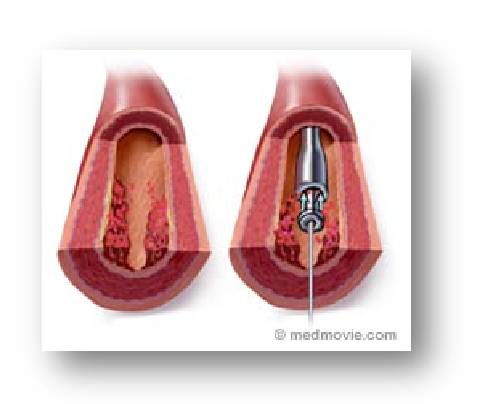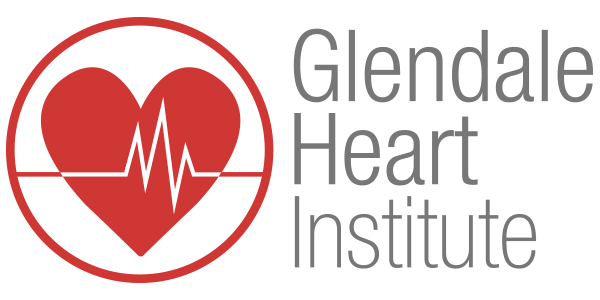A thrombectomy is a surgical procedure used to remove a blood clot (thrombus) from a vessel.
The thrombus obstructs blood flow and may cause tissue death and even loss of a limb if the circulation is not restored promptly.
Thrombosis can occur in veins or arteries. However, thrombectomy in the venous system is rarely done since there is little threat of limb loss and there is a high incidence of recurrent thrombosis postoperatively. Consequently, thrombectomy is generally indicated only when there is an arterial thrombosis that is causing severe tissue injury in an extremity (limb-threatening ischemia).
Blood clots that may be removed using thrombectomy include those arising in the large artery of the hip and thigh (iliofemoral artery) and the artery beneath the clavicle (subclavian artery). The procedure is slightly different depending upon which vessel is involved.
The blood clot (thrombus) may arise from damage to the inner lining of the blood vessel that results from direct trauma, inflammation or atherosclerosis. Examples of direct trauma to the inner lining of the vessel include stretching or shearing of the vessel during vascular interventions (i.e., arteriograms) or from blunt force or crushing injuries to an extremity. In atherosclerosis, the formation of firm, atherosclerotic plaque can damage the inner lining of arteries and precipitate clot formation (thrombosis). Conditions that cause the blood to clot more easily such as dehydration or elevated red blood cell counts (polycythemia), may also be associated with thrombus formation
Reason for Procedure
This procedure is used to re-establish blood flow to large arteries completely blocked by a blood clot. Sudden blockage of large arteries that supply the legs or arms can cause insufficient tissue oxygenation that quickly leads to tissue death and possible loss of limbs.
The thrombus obstructs blood flow and may cause tissue death and even loss of a limb if the circulation is not restored promptly.
Thrombosis can occur in veins or arteries. However, thrombectomy in the venous system is rarely done since there is little threat of limb loss and there is a high incidence of recurrent thrombosis postoperatively. Consequently, thrombectomy is generally indicated only when there is an arterial thrombosis that is causing severe tissue injury in an extremity (limb-threatening ischemia).
Blood clots that may be removed using thrombectomy include those arising in the large artery of the hip and thigh (iliofemoral artery) and the artery beneath the clavicle (subclavian artery). The procedure is slightly different depending upon which vessel is involved.
The blood clot (thrombus) may arise from damage to the inner lining of the blood vessel that results from direct trauma, inflammation or atherosclerosis. Examples of direct trauma to the inner lining of the vessel include stretching or shearing of the vessel during vascular interventions (i.e., arteriograms) or from blunt force or crushing injuries to an extremity. In atherosclerosis, the formation of firm, atherosclerotic plaque can damage the inner lining of arteries and precipitate clot formation (thrombosis). Conditions that cause the blood to clot more easily such as dehydration or elevated red blood cell counts (polycythemia), may also be associated with thrombus formation
Reason for Procedure
This procedure is used to re-establish blood flow to large arteries completely blocked by a blood clot. Sudden blockage of large arteries that supply the legs or arms can cause insufficient tissue oxygenation that quickly leads to tissue death and possible loss of limbs.

How Procedure is Performed
In a thrombectomy for iliofemoral thrombosis, local or general anesthesia is administered, and the leg is enclosed in a sterile stockinette. An incision is made near the groin. Vessels around the blood clot are clamped, the artery is partially opened, and the blood clot is partially extracted with forceps. A thrombectomy catheter with a balloon at the tip is then inserted and used to remove the remainder of the blood clot. The vessel and skin surface is stitched closed.
In a thrombectomy for subclavian thrombosis, general anesthesia is administered. An incision is made along the clavicle. The subclavian artery is opened, and the blood clot is removed. There is generally no need for a thrombectomy catheter. Anticoagulant medications may be administered before and following the procedure. Prior to the procedure, an arteriogram is used to determine the exact location and extent of thrombosis.
Prognosis
When the thrombectomy is done promptly before prolonged loss of blood flow and tissue death (necrosis), the outcome is usually good. Re-occlusion of the vessel is more likely if there are distortions in the blood vessel wall (such as aneurysms or plaque). In these cases, the artery may require a surgically placed bypass graft (femoral artery graft, subclavian artery graft).
In a thrombectomy for iliofemoral thrombosis, local or general anesthesia is administered, and the leg is enclosed in a sterile stockinette. An incision is made near the groin. Vessels around the blood clot are clamped, the artery is partially opened, and the blood clot is partially extracted with forceps. A thrombectomy catheter with a balloon at the tip is then inserted and used to remove the remainder of the blood clot. The vessel and skin surface is stitched closed.
In a thrombectomy for subclavian thrombosis, general anesthesia is administered. An incision is made along the clavicle. The subclavian artery is opened, and the blood clot is removed. There is generally no need for a thrombectomy catheter. Anticoagulant medications may be administered before and following the procedure. Prior to the procedure, an arteriogram is used to determine the exact location and extent of thrombosis.
Prognosis
When the thrombectomy is done promptly before prolonged loss of blood flow and tissue death (necrosis), the outcome is usually good. Re-occlusion of the vessel is more likely if there are distortions in the blood vessel wall (such as aneurysms or plaque). In these cases, the artery may require a surgically placed bypass graft (femoral artery graft, subclavian artery graft).
Complications
Complications include artery puncture or tearing, heart attack (from dislodged fragments that travel to the heart or lungs), occlusion of more distal arteries in the affected extremity, bleeding, infection (rare) and swelling of an extremity after the blood flow is restored.
Ability to Work (Return to Work Considerations)
Individuals on anticoagulation therapy (could be as long as 12 to 24 weeks) need to take caution against cuts and bruises, as they tend to bleed more easily. Temporary transfer to sedentary work may be needed to reduce risk of injury.
To avoid the risk of recurrent thrombus formation, individuals need to avoid prolonged periods of immobility such as sitting or standing. Those who have occupations that require prolonged standing or sitting (such as bank tellers or desk jobs) may need frequent breaks. Likewise, those in outdoor occupations (construction, landscaping) need to take precautions against dehydration.
Complications include artery puncture or tearing, heart attack (from dislodged fragments that travel to the heart or lungs), occlusion of more distal arteries in the affected extremity, bleeding, infection (rare) and swelling of an extremity after the blood flow is restored.
Ability to Work (Return to Work Considerations)
Individuals on anticoagulation therapy (could be as long as 12 to 24 weeks) need to take caution against cuts and bruises, as they tend to bleed more easily. Temporary transfer to sedentary work may be needed to reduce risk of injury.
To avoid the risk of recurrent thrombus formation, individuals need to avoid prolonged periods of immobility such as sitting or standing. Those who have occupations that require prolonged standing or sitting (such as bank tellers or desk jobs) may need frequent breaks. Likewise, those in outdoor occupations (construction, landscaping) need to take precautions against dehydration.
Cardiac Specialty Care
• Structural Heart Disease
• TAVR
• CardioMEMS (Heart Failure)
• PFO Closure
• TAVR
• CardioMEMS (Heart Failure)
• PFO Closure
• Coronary Intervention
• Complex Higher-Risk (And Indicated) Patients (CHIP) Angioplasty
• Atherectomy
• Impella and ECMO Support
• Complex Higher-Risk (And Indicated) Patients (CHIP) Angioplasty
• Atherectomy
• Impella and ECMO Support
• Peripheral Angioplasty
• Varicose Vein Treatment (Venous Ablation)
• DVT thrombectomy - IVC filter
• Carotid Stenting
• Varicose Vein Treatment (Venous Ablation)
• DVT thrombectomy - IVC filter
• Carotid Stenting
• Rhythm Management
• Pacemaker
• Holter Monitoring
• Exercise Stress Test
• Echocardiography
• Nuclear Stress Test
• Enhanced External Counterpulsation (EECP)
• Pacemaker
• Holter Monitoring
• Exercise Stress Test
• Echocardiography
• Nuclear Stress Test
• Enhanced External Counterpulsation (EECP)
